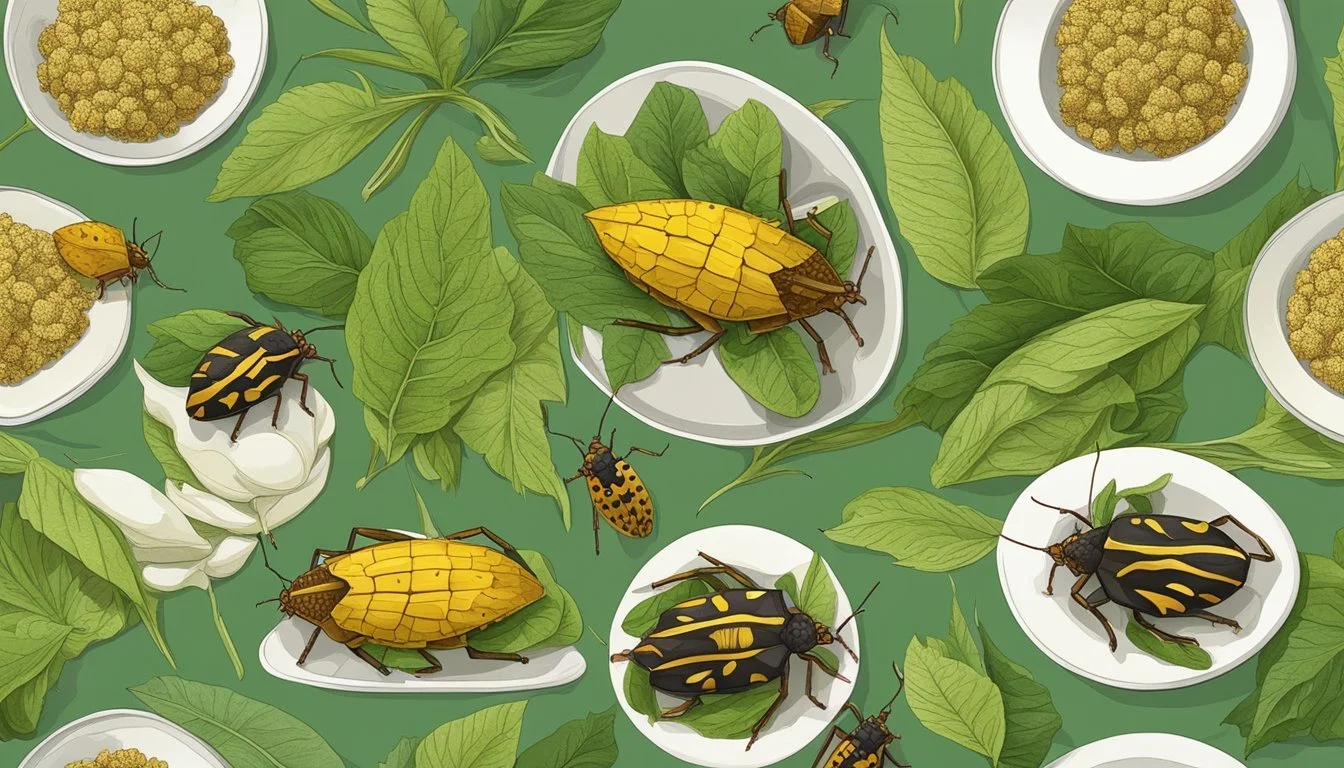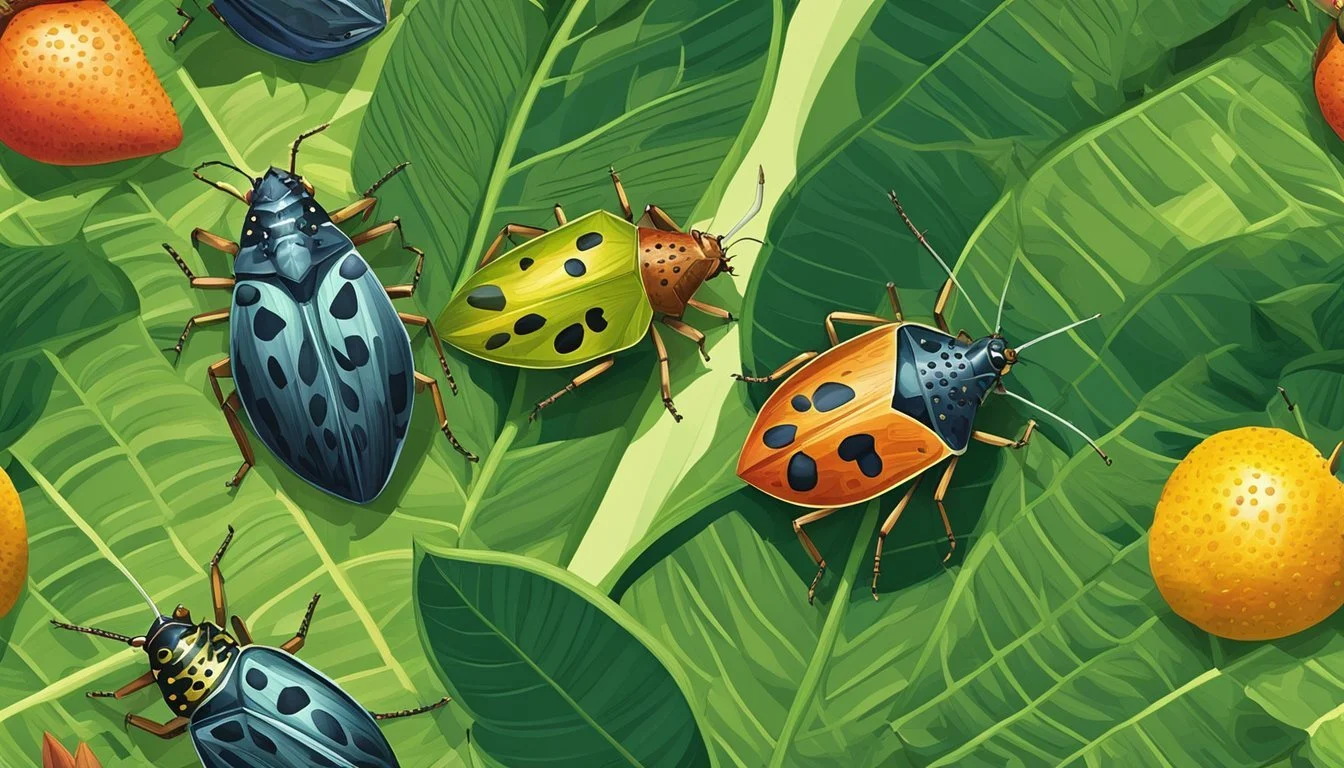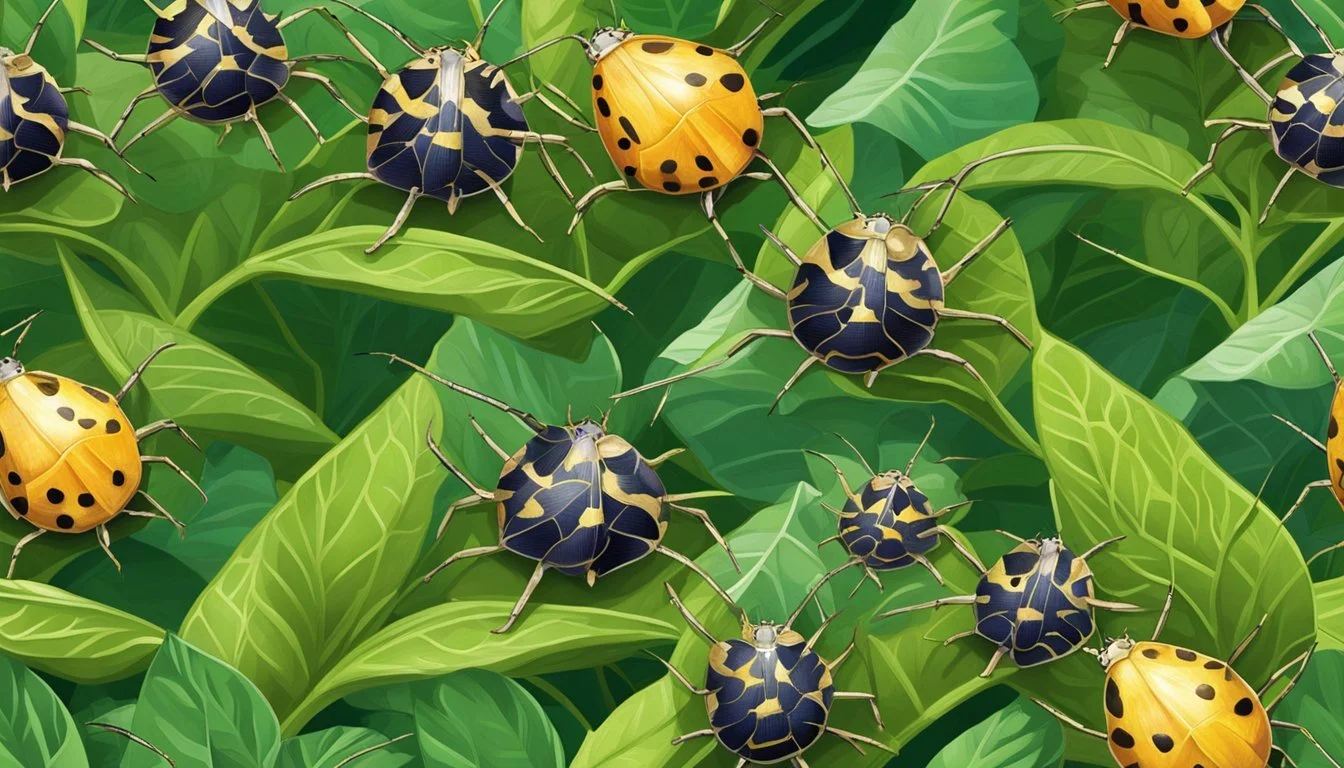Stink Bugs The African Insect Enhancing Traditional Flavors
Insects have long been a staple in various cultures worldwide, and entomophagy, the practice of eating insects, is gaining recognition for its potential to contribute to sustainable food security. The stink bug, an insect indigenous to Africa, is emerging as a notable addition to the continent's diverse gastronomy. Rich in nutrients, the stink bug is esteemed not only for its contribution to local cuisine but also for its potential health benefits.
In African countries, edible stink bugs are harvested and consumed for their flavor and nutritional value. The stink bug offers a significant source of protein and contains essential amino acids, often complementing diets that are predominantly cereal-based. The insect is also praised for containing flavonoids, beneficial compounds known for their antioxidant and anti-inflammatory properties.
The consumption of stink bugs is more than just a dietary choice; it also represents a part of cultural traditions and local economies. Villagers harvest these bugs, and in some regions, they are sold to travelers and locals alike, thus integrating these insects into the food market. This practice not only provides nutritional benefits but also opens up opportunities for livelihoods in African communities.
Cultural and Nutritional Significance of Stink Bugs
Stink bugs have a rich cultural heritage in African cuisine, providing essential nutrients and health benefits through their consumption. Their integration into dishes is a testament to the continent's sustainable use of natural resources.
Historical Use in African Cuisine
They are a longstanding component in the diets of various African communities, revered not just for their flavor but also as a sustainable food source. Traditionally harvested and prepared in a manner that accentuates their unique taste, stink bugs are often dried, smoked, or fried, transforming into a crispy snack or a savory addition to meals.
Nutritional Profile and Health Benefits
Nutrient: Protein
Benefit: High-quality protein comparable to conventional meat.
Nutrient: Fatty Acids
Benefit: Contains essential fatty acids important for heart health.
Nutrient: Amino Acids
Benefit: Offers a complete profile of amino acids for muscle repair and growth.
Nutrient: Vitamins
Benefit: Source of vitamins such as B-vitamins, contributing to effective metabolism.
Nutrient: Minerals
Benefit: Provides vital minerals, including zinc and iron, essential for immune function.
Consuming edible insects like stink bugs is not only culturally significant but also nutritionally beneficial, as they are packed with high levels of protein and essential nutrients. Furthermore, stink bugs offer a range of health benefits, from providing amino acids necessary for bodily functions to fatty acids that support cardiovascular health. In addition to their high protein content, they are also a source of vitamins and minerals, which contribute to overall well-being.
Environmental Impact and Conservation
Stink bugs, being part of the rich tapestry of African ecosystems, play a multifaceted role in both ecology and local economies, with conservational practices and sustainability being key to their continued presence.
Stink Bugs in Ecosystems
Stink bugs contribute significantly to biodiversity. As both prey and predator, they help maintain the ecological balance, aiding in the control of other insect populations. Conservation efforts are thus crucial as they support the sustenance of complex food webs. Environmental health relies on such balance to thrive, with stink bugs acting as a natural pest control agent, reducing the need for chemical pesticides that may otherwise harm ecosystems.
Sustainability of Insect Harvesting
Sustainable harvesting practices are vital to ensure stink bugs remain a renewable natural resource. These practices include:
Setting quotas during harvesting seasons to prevent overcollection
Utilizing non-destructive collection methods to avoid habitat disruption
Implementing periods of rest to allow stink bug populations to recover
The sale of stink bugs as food promotes sustainability by providing an alternative protein source with a low environmental footprint, especially considering water usage—insects generally require less water than traditional livestock. Additionally, they convert feed into protein more efficiently, making them a sustainable choice in both rural and urban settings. Maintaining this balance is key to the preservation of both the stink bugs and the local communities that depend on them.
Economic Aspects and Food Security
In many parts of Sub-Saharan Africa and South Africa, edible insects, particularly stink bugs, are not merely exotic delicacies but are integral to food security and economic sustainability.
Income Opportunities from Edible Insects
Edible insects, such as stink bugs, provide an accessible source of income for rural communities. The harvesting and selling of these insects can be a lucrative activity due to their economic value and demand, especially when other food sources might be scarce. In South Africa, indigenous knowledge systems and entomophagy practices contribute to livelihoods, with stink bugs being harvested, prepared, and sold by local entrepreneurs. With increasing human population and the need for sustainable food systems, the economic potential of edible insects as an income-generator for impoverished communities is significant. Such opportunities elicit a positive ripple effect in the local economies where these practices are embedded.
Contribution to Food Security and Alleviating Malnutrition
Stink bugs, and edible insects in general, are high in nutritional content, making them a potent weapon against malnutrition in regions plagued by food insecurity. In Sub-Saharan Africa, where rapid population growth challenges existing food systems, edible insects provide an affordable and sustainable alternative protein source. They are increasingly recognized for their role in a sustainable food system that supports the dietary needs of the growing human population without the environmental impact associated with traditional livestock. By integrating edible insects like stink bugs into their diets, communities are taking important steps towards alleviating malnutrition and fostering food security.
Harvesting, Storage, and Processing
In African countries where stink bugs are a local delicacy, the harvesting, storage, and processing are carried out with traditional techniques honed over generations. These practices not only ensure the sustainability of stink bug populations but also play a crucial role in maintaining food safety and quality.
Methods of Harvesting Stink Bugs
In southern Africa, Encosternum delegorguei, commonly enjoyed as an edible insect, is harvested using methods that avoid breeding sites during insect breeding periods to sustain their populations. Villagers often gather these bugs from forests, carefully selecting the prime specimens to ensure a high-quality product. The precise timing of harvesting can affect the price, with small portions selling for $0.50 to $1 during different stages of the season.
Post-Harvest Handling and Storage
Once harvested, the bugs need to be processed promptly to prevent spoilage and mycotoxin contamination, specifically aflatoxins, which are harmful to human health. Traditional handling and storage practices are crucial in this regard. Stink bugs are typically dried in the sun or smoked to extend shelf life and enhance their flavor. This method reduces moisture, creating an environment less conducive to aflatoxin-producing fungi.
Processing for Consumption
The processing of stink bugs for consumption generally includes cleaning, cooking, or roasting. These methods not only render the bugs safe for eating but also help in developing their unique taste. Some communities ground the dried insects into a fine powder to use as a protein-rich additive in various dishes, contributing to the culinary diversity of the region.
Scientific Research and Future Prospects
Ongoing scientific research continues to shed light on the role stink bugs play in local cuisines and their potential to enhance global food diversity. This focus paves the way for innovative nutritional contributions and culinary applications.
Current Studies on Edible Stink Bugs
Researchers have identified stink bugs as a source of nutrition, and studies are examining their potential inclusion in diets. Centres of excellence are often leading these research endeavors, with scientists actively involved in unearthing the nutritional value of stink bugs. Postdoctoral fellowships are increasingly funding these studies to better understand the insects' role in food security. Prominent publications such as the PLOS One journal have featured articles that discuss the edible aspects of stink bugs, highlighting their protein content and potential health benefits.
Potential for Expansion in Global Cuisine
Enthusiasm for expanding the use of stink bugs in global cuisine is mounting among food scientists. With a growing interest in sustainable and alternative protein sources, stink bugs could soon be popping up in dishes far beyond their traditional African roots. The necessary funding is crucial for such initiatives to progress and for stink bugs to possibly become a recognized culinary ingredient worldwide. As research intensifies and produces promising results, the elevation of stink bugs from a local delicacy to an international sensation may become a reality.
Challenges and Considerations
In exploring stink bugs as a food source, there are pertinent factors that demand careful scrutiny. They pertain to ensuring public health and negotiating societal norms, which are vital for successful integration into the food industry.
Addressing Food Safety Concerns
Food safety is paramount in the consumption of stink bugs, as it is with any food product. Regulators are responsible for establishing clear guidelines to eliminate risks such as contamination and ensure that stink bugs are harvested, prepared, and consumed safely. Due to the potential for harmful microorganisms or chemical contaminants, protocols on handling and processing must strictly follow standards akin to those in the broader food industry. This approach is critical to addressing food insecurity, as it ensures that the nutritional potential of stink bugs is harnessed without compromising consumer health.
Regulatory and Cultural Hurdles
The incorporation of stink bugs into mainstream diets faces a dual challenge of navigating through regulatory frameworks and gaining cultural acceptance. Each country's regulations on novel foods might range extensively, impacting how stink bugs can be marketed and sold. Additionally, for people unfamiliar with entomophagy, the practice of consuming insects can be met with skepticism and reluctance. Therefore, the promotion of stink bugs as a food item requires targeted educational campaigns to illustrate their culinary value and alleviate potential biases. Providing evidence-based benefits and addressing common misconceptions helps in fostering acceptance within different cultural contexts.
Global Perspectives on Edible Insects
Edible insects are gaining attention worldwide for their nutritional benefits and sustainability compared to traditional livestock and plant-based proteins.
Comparison to Traditional Foods
Insects such as stink bugs are an integral part of many traditional diets in countries like Ghana, where these insects serve as a significant source of protein and micronutrients. A comparison of protein content finds that edible insects can contain protein levels from 40 to 75%, often higher than animal protein which ranges from 12% to 34.5%. This positions insects as a highly efficient nutrient source. For instance, in Mexico, where the consumption of insects is also part of their rich culinary heritage, grasshoppers provide a crunchy bite and a protein-rich addition to meals.
Acceptance and Utilization Worldwide
The acceptance of edible insects varies widely globally, with countries such as Japan incorporating insects like wasps into traditional dishes. Meanwhile, in America, there is a growing curiosity and increasing market for insect-based food products, although the concept is still far from mainstream acceptance. However, the conversation about utilizing edible insects is picking up due to their lower environmental impact and potential to serve as an alternative protein source. The utilization of insects is being explored in various forms, from whole insects in dishes to processed forms like insect flour used in baking. This reflects a global trend toward investigating the use of alternative protein sources to support a more sustainable food system.
Case Studies and Local Practices
Stink bugs are not only a subject of pest management but also an integral part of local cuisine in various African communities. This section explores how these insects are harvested and utilized in Southern Africa and provides a global context for the consumption of insects.
Stink Bug Use in Southern African Communities
In parts of Southern Africa, such as Zimbabwe and Botswana, the harvesting and consumption of stink bugs, specifically the edible species Encosternum delegorguei, is a time-honored tradition. Local practices in areas like the Jiri Forest and Thongolifha involve selectively harvesting these bugs during the non-breeding season. The practice is deeply rooted in community-managed systems aimed at sustaining their populations. For example, in Zimbabwe, the indigenous Harurwa stink bugs are a delicacy that is seasonally harvested by the community. Consuming these bugs is not only culturally significant but also seen as a means to reinforce food security. The table below outlines the key information related to stink bug harvesting across different Southern African regions:
Region: Zimbabwe
Species Harvested: E. delegorguei
Harvest Season: Non-breeding period
Method of Harvesting: Selective handpicking; community-led initiatives
Significance: Culinary delicacy; food security
Region: Botswana
Species Harvested: E. delegorguei
Harvest Season: Non-breeding period
Method of Harvesting: Selective handpicking; regulated collection
Significance: Cultural importance; Nutritional supplement
Region: Mozambique
Species Harvested: Various Stink Bugs
Harvest Season: Varies
Method of Harvesting: Traditional methods; often community-based
Significance: Seasonal protein source; culinary practices
Region: Malawi
Species Harvested: Various Stink Bugs
Harvest Season: Seasonal
Method of Harvesting: Community harvesting; manual collection
Significance: Enhances flavor of dishes; food security
International Examples of Insect Consumption
Beyond Africa, insect consumption is a global phenomenon characterized by diverse cultural practices. In many countries, insects are valued as a sustainable protein source. In Asia and Latin America, where stink bugs are not typically the norm, other insect species such as crickets, mealworms, and grasshoppers hold a place in local diets. The versatility of these insects in cuisine is significant because it showcases a potential pathway towards achieving global food security amidst increasing demand. They offer an environmentally friendly alternative protein source to traditional livestock, with many countries encouraging their use to reduce the strain on natural resources.
References
The study of edible stink bugs is essential for understanding their role in African diets and potential as a sustainable food source. The following references provide insight into the importance of these insects in local cuisine and their impact on environmental health and nutritional value.
Edible Insects and Food Security in Africa
"Edible Insects Consumption in Africa towards Environmental Health and Sustainable Food Systems: A Bibliometric Study" discusses the importance of edible insects like stink bugs to meet the growing food demand in Africa.
Local Trade and Economic Value
The article from FairPlanet, "The mysterious stink bug saving an African forest," addresses the economic aspects, detailing how villagers sell stink bugs to travelers, denoting their market value.
Identification and Features
"Edible stinkbug - SANBI" provides the distinct characteristics of edible stink bugs, which aids in their proper identification and utilization in African cuisine.
Nutritional Benefits and Research
Insights from the article, "Stink bug could boost health and nutrition in Africa," underline the essential nutrients found in these insects and their viability as an alternative protein source.
Cultural Significance and Comparative Study
"Comparative ethnoentomology of edible stinkbugs in southern Africa and ..." explores the cultural importance of stink bugs as a food source, including their role in traditional practices and as a delicacy.
Each reference brings a unique perspective to the table, from economic impact to nutritional value, highlighting the stink bug's multifaceted contributions to African societies.
Appendix
This Appendix provides practical content related to stink bugs as a nutritional option in culinary practices. It includes recipes that integrate stink bugs for adventurous palates, and presents the nutritional data substantiating their health benefits.
Recipe Ideas Using Stink Bugs
Stink Bug Stir-Fry:
Ingredients:
Fresh stink bugs, cleaned and prepared
Vegetables (e.g., bell peppers, onions, (What wine goes well with onions?) carrots)
Soy sauce or preferred seasoning
Cooking oil (e.g., vegetable or peanut oil)
Directions:
Heat oil in a pan over medium heat.
Add vegetables and stir-fry until slightly tender.
Introduce stink bugs and cook until they are lightly crispy.
Season with soy sauce or desired spices to taste.
Serve over rice or enjoy as a standalone dish.
Note: Cooking times and seasonings can be adjusted according to taste preferences and dietary needs.
Nutritional Tables and Data
Nutritional Profile of Edible Stink Bugs (per 100g):
Nutrient: Protein
Value: 20g
Nutrient: Fats
Value: 12g
Nutrient: Carbohydrates
Value: 5g
Nutrient: Fiber
Value: 3.2g
Nutrient: Calories
Value: 209 kcal
From the table, it's evident that stink bugs are a considerable source of protein and fats, crucial for a balanced diet. They hold potential in the food industry as an alternative protein source to approach the growing global food demands sustainably.
Acknowledgments
This section extends recognition to individuals and bodies that have contributed to understanding the culinary and nutritional role of stink bugs in Africa.
Contribution of Researchers and Organizations
Researchers have played a critical role in revealing the nutritional potential of stink bugs. Through their studies, they provide insights that underscore the importance of these insects as a sustainable food source. The PLOS One journal, among other academic outlets, has been pivotal in disseminating this knowledge by publishing peer-reviewed articles that investigate various aspects of edible insects, including stink bugs.
Organizations like the German Academic Exchange Service (DAAD) contribute to this field by supporting research initiatives and facilitating knowledge exchange between scientists. These collaborations help to advance the study of entomophagy, and further establish the credence of edible insects in sustainable diets.
Scientists: Charged with conducting empirical research and experimentation.
PLOS One Journal: Offers a platform for the publication and dissemination of research findings.
German Academic Exchange Service: Provides necessary support for research endeavors and academic collaboration.












